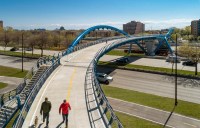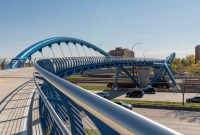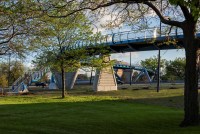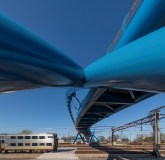The City of Chicago, through an international design competition called “Bridging the Drive,” has constructed a new signature pedestrian bridge at 41st Street. The project’s primary goals were to connect the Bronzeville neighborhood to the west of the bridge with the lakefront with an iconic structure that results in a dynamic, welcoming, and memorable experience for its users.
Winner- Urban Design & Architecture Design Awards 2019
Firm | Cordogan Clark & Associates & AECOM
Category | Urban Design (Built)
Team | CCA: John Clark, Tim Wilkin, Laura Novick, Louis Peragallo, Wai Chiang; AECOM: Mike Eichten, Jixing He
Country | United States
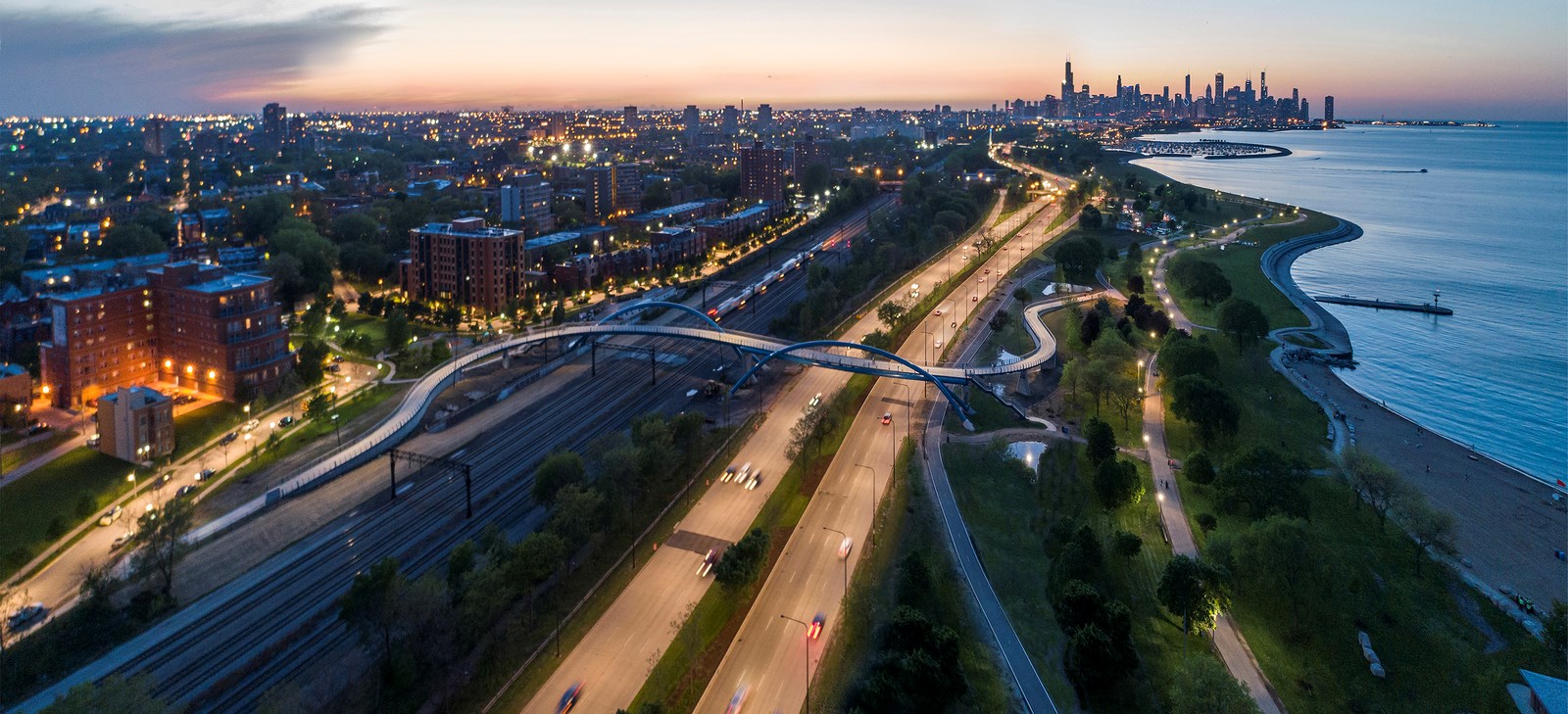
The 41st Street Bridge is a major civic project that provides bicycle and ADA-compliant pedestrian, wheelchair, and stroller lakefront access for neighborhoods to its west. Before, Lakeshore Drive and the train created an enormous barrier.
With its twin inclined arches on reverse curves, the 41st Street Pedestrian Bridge structure is unique in the world. Unlike typical arch bridges which are symmetric in horizontal and vertical directions, the 41st Street arch spans are on reverse curves with a long crest curve that rises 7’ (2.13 meter) higher between the arches than at the outside ends of the arch at the approaches. Its arches are inclined at 30 degrees from vertical, and the deck rib is curved on a 400’ radius that is supported by hangers on one side only. The 1,500-foot (457.2 meter) long bridge creates a large, graceful S-curve that echoes the park’s Olmsted walkways to extend the lakefront parkway west. It curves horizontally and vertically, creating an urban promenade that is unique, welcoming, and memorable. Its slender, minimal detailing provides excellent views to and from all points: There are no hidden areas. Users are gently guided to spectacular city views in all directions.The bridge projects outwards to create grand balconies at midspan. It glides gently to rest at each end of its span, with ramps supported on a rusticated concrete base that tapers into the landscape to help the bridge blend with and extend the park environment. Its west ramp hugs the east boundary of a park, creating a sculptural backdrop between the park and the train.
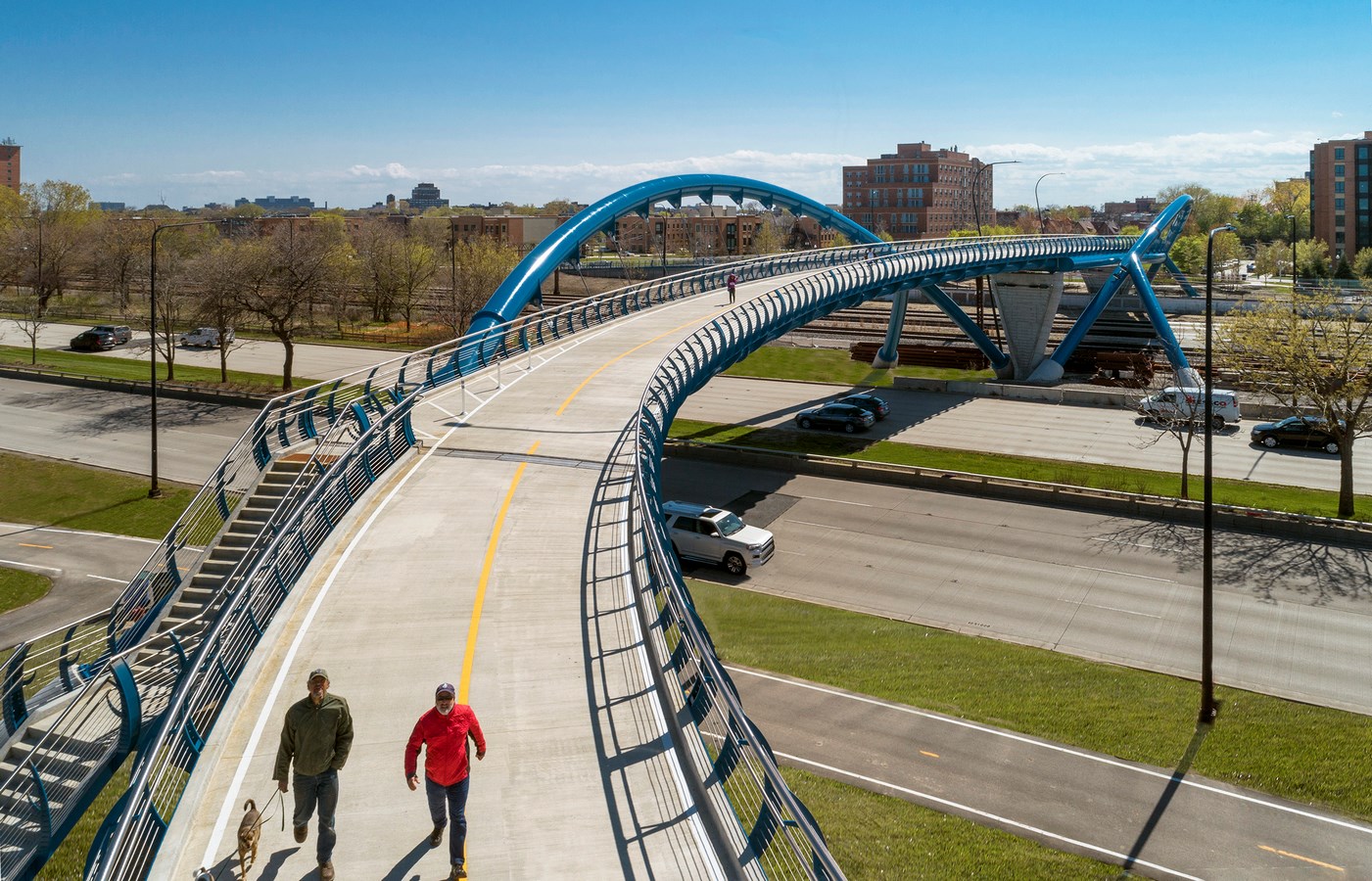
The simple and clean structural detailing uses large 4’ diameter (1.2 meter) steel tube and plate sections to support a 20’ wide concrete deck. Its radiused railings raise the bridge’s curves vertically, reinforcing its dynamic sculptural form.
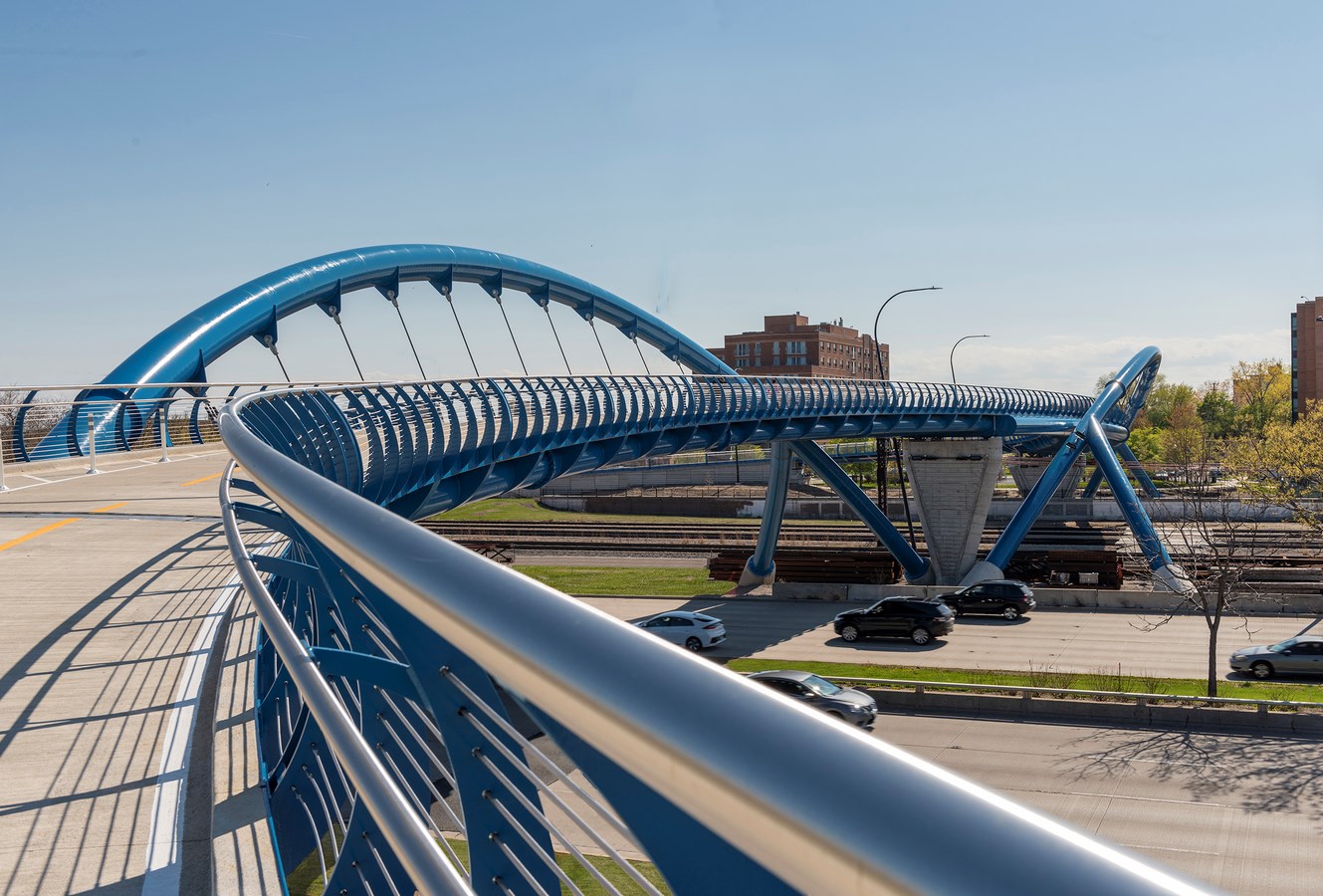
Prior to construction of the new bridge, residents had to travel more than a half mile to the nearest bridge crossing the railroad tracks and Lake Shore Drive to reach the lakefront. The new 41st Street Pedestrian Bridge links the recently redeveloped neighborhood on the west with the lakefront trail and 41st Street Beach on the east. The bridge was constructed to accommodate pedestrians, bicyclists, people with disabilities and emergency vehicles. To be fully accessible and usable, the bridge has both ramps and stairs at both ends. The new bridge has been developed to minimize the landing footprint within the adjacent parks while integrating accessibility to the bridge.
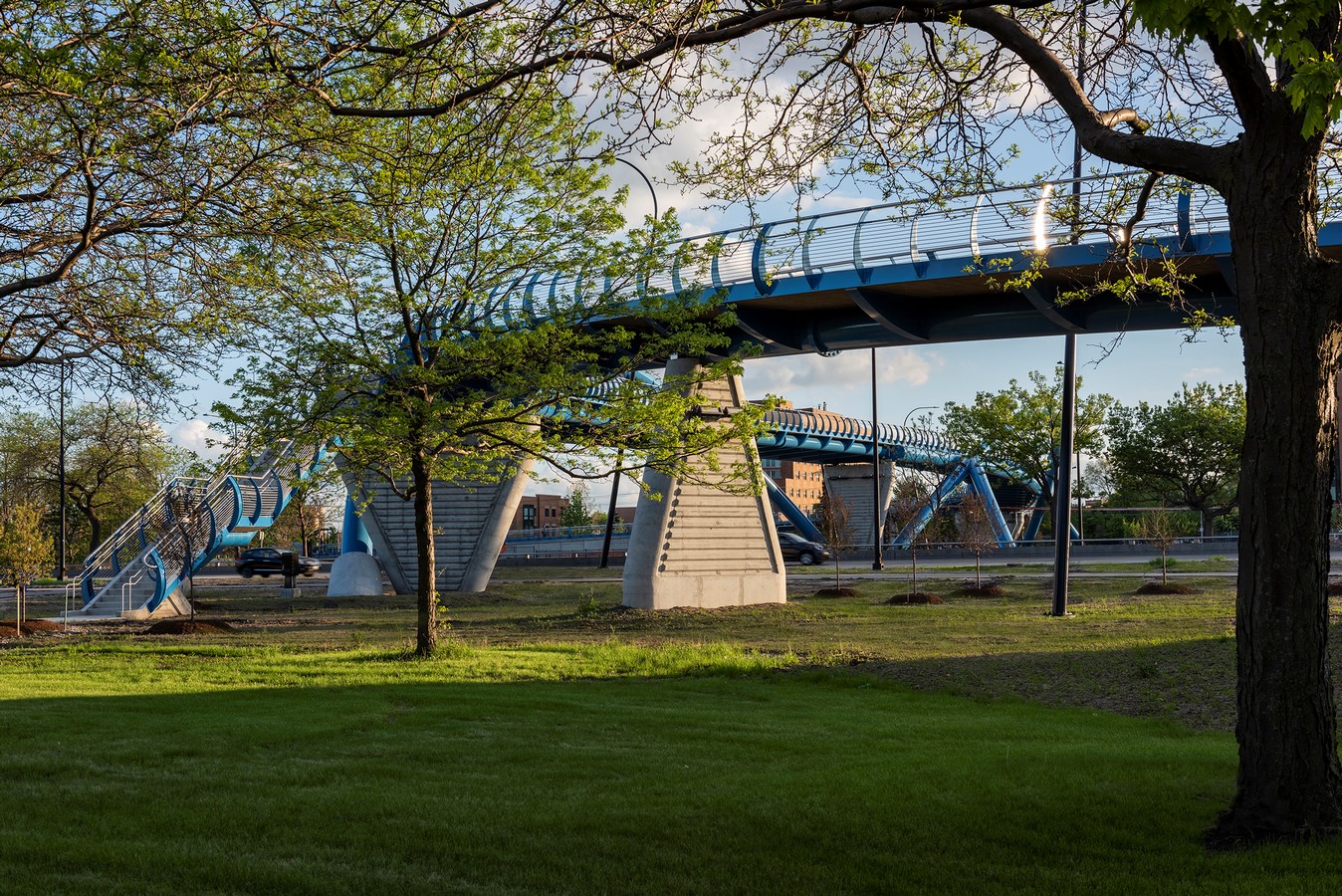
With its lean, muscular, dynamic form, the 41st Street Bridge is in keeping with Chicago’s tradition structural expressiveness: Form, function, and structure are one.





